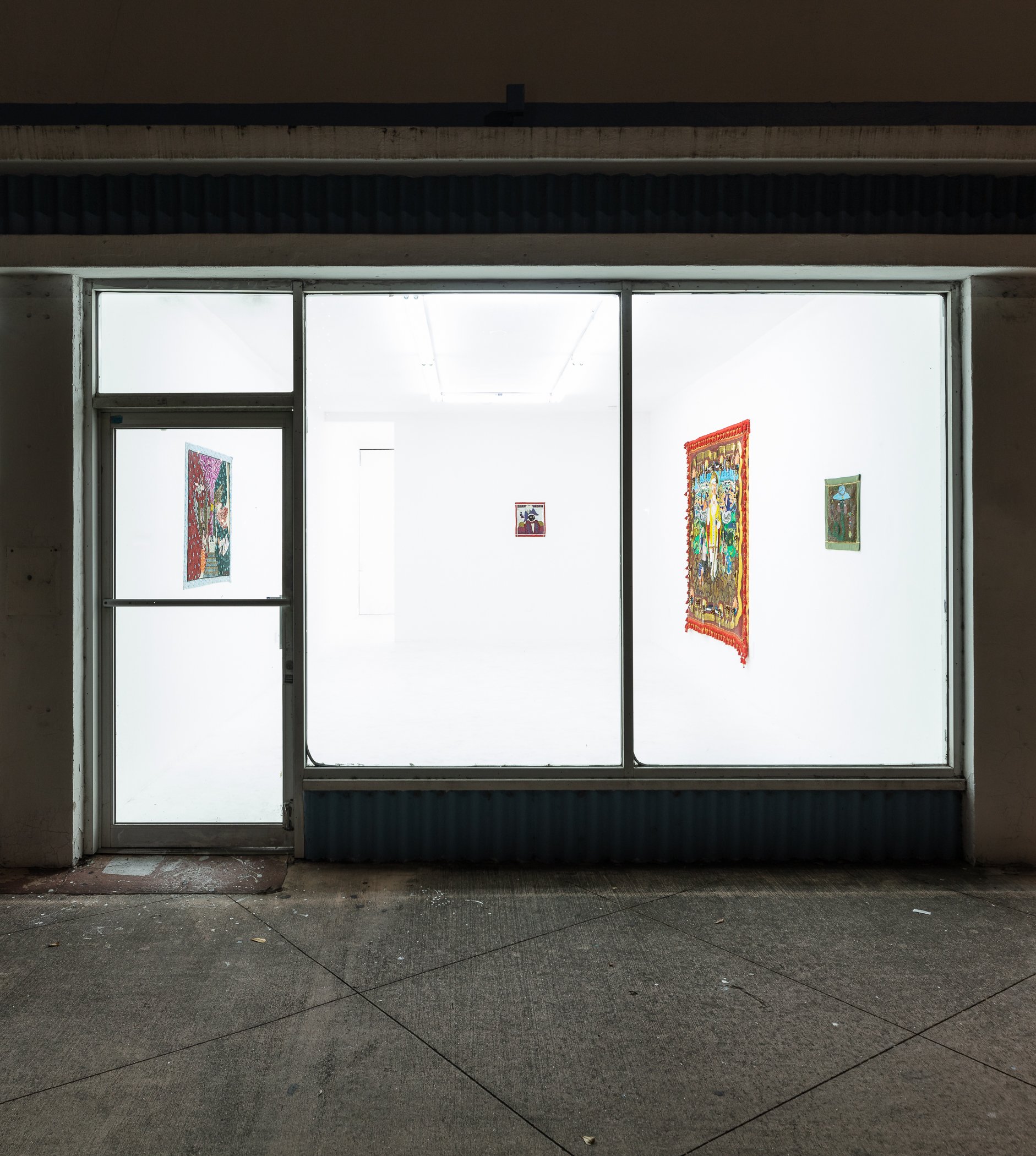
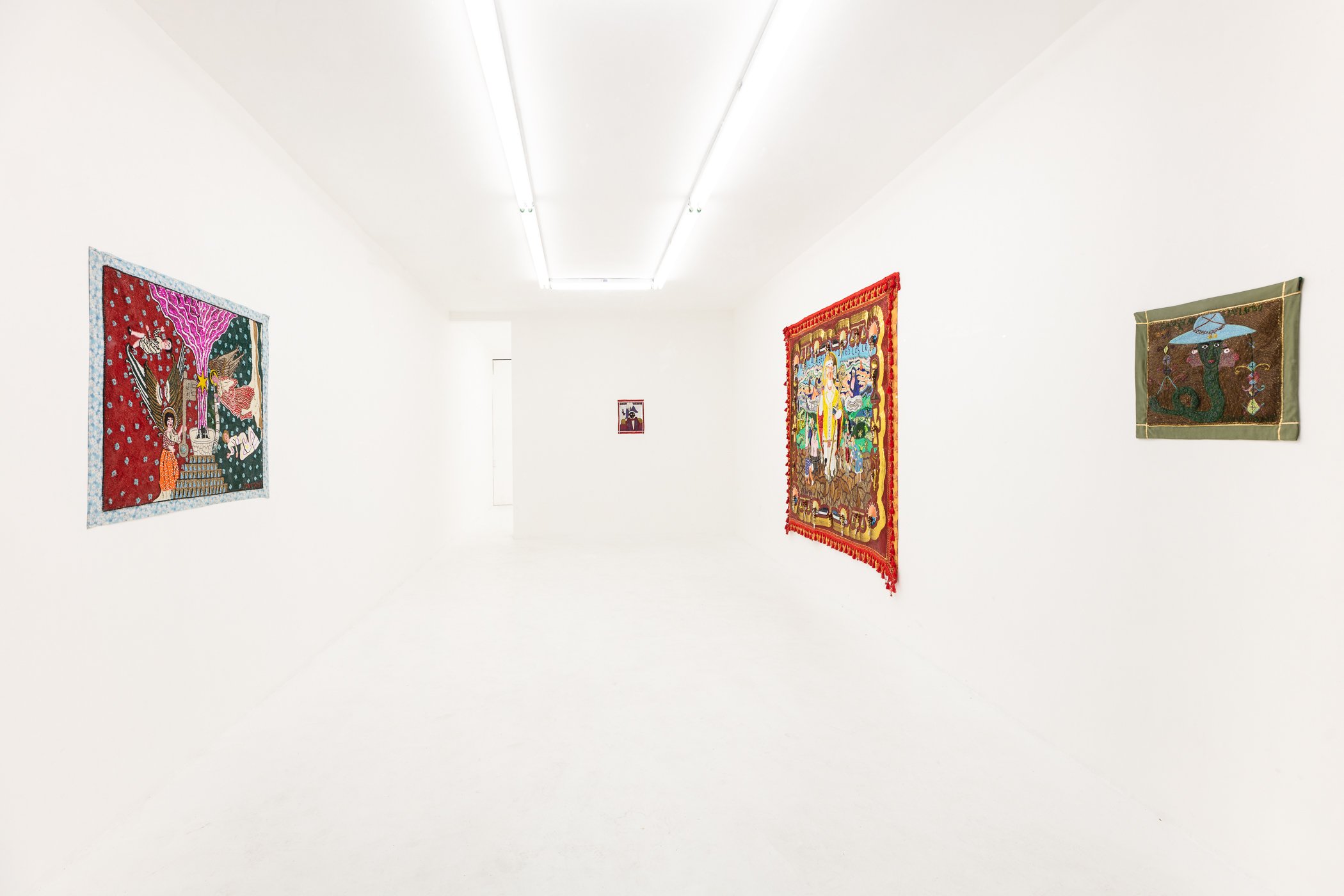
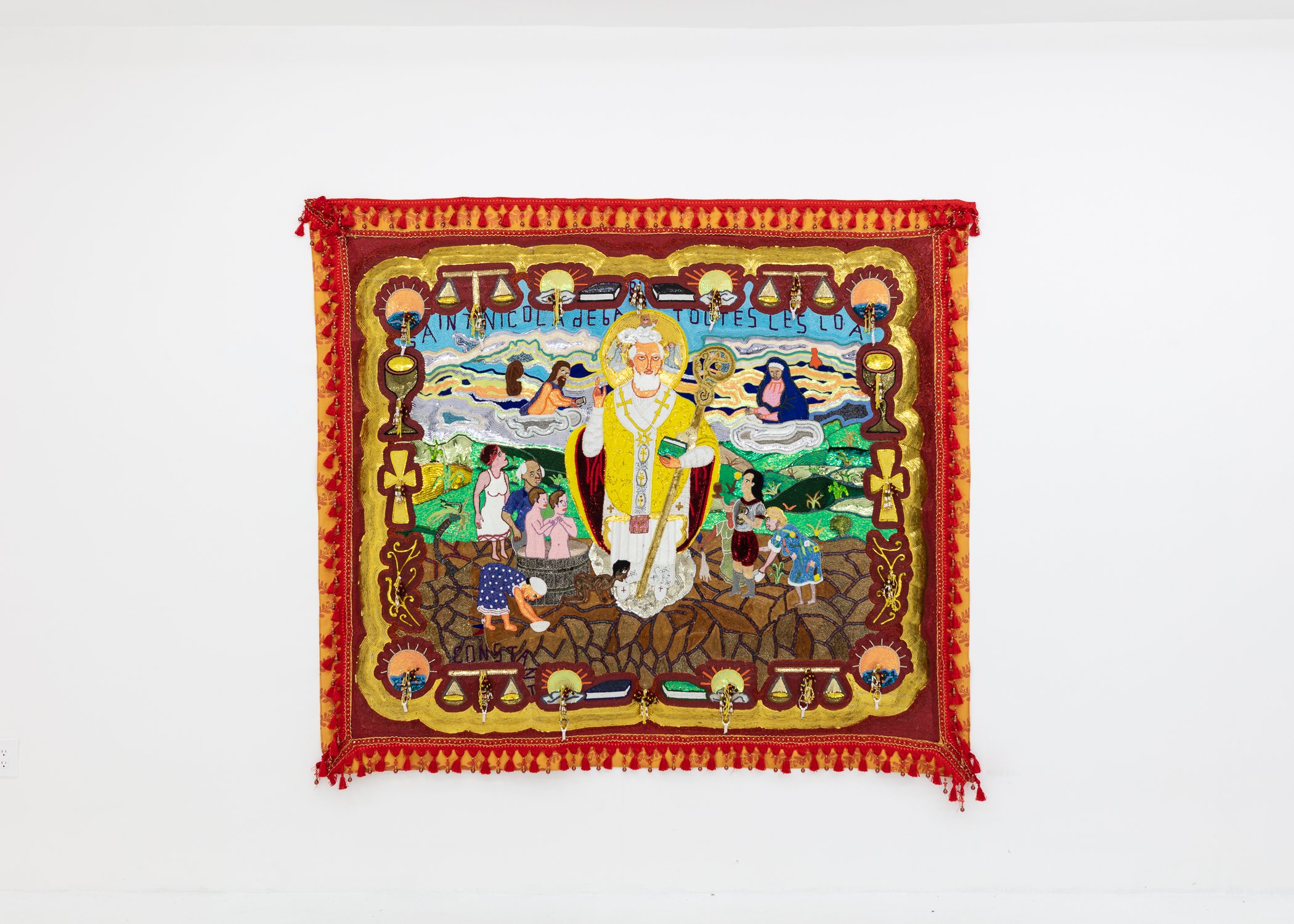
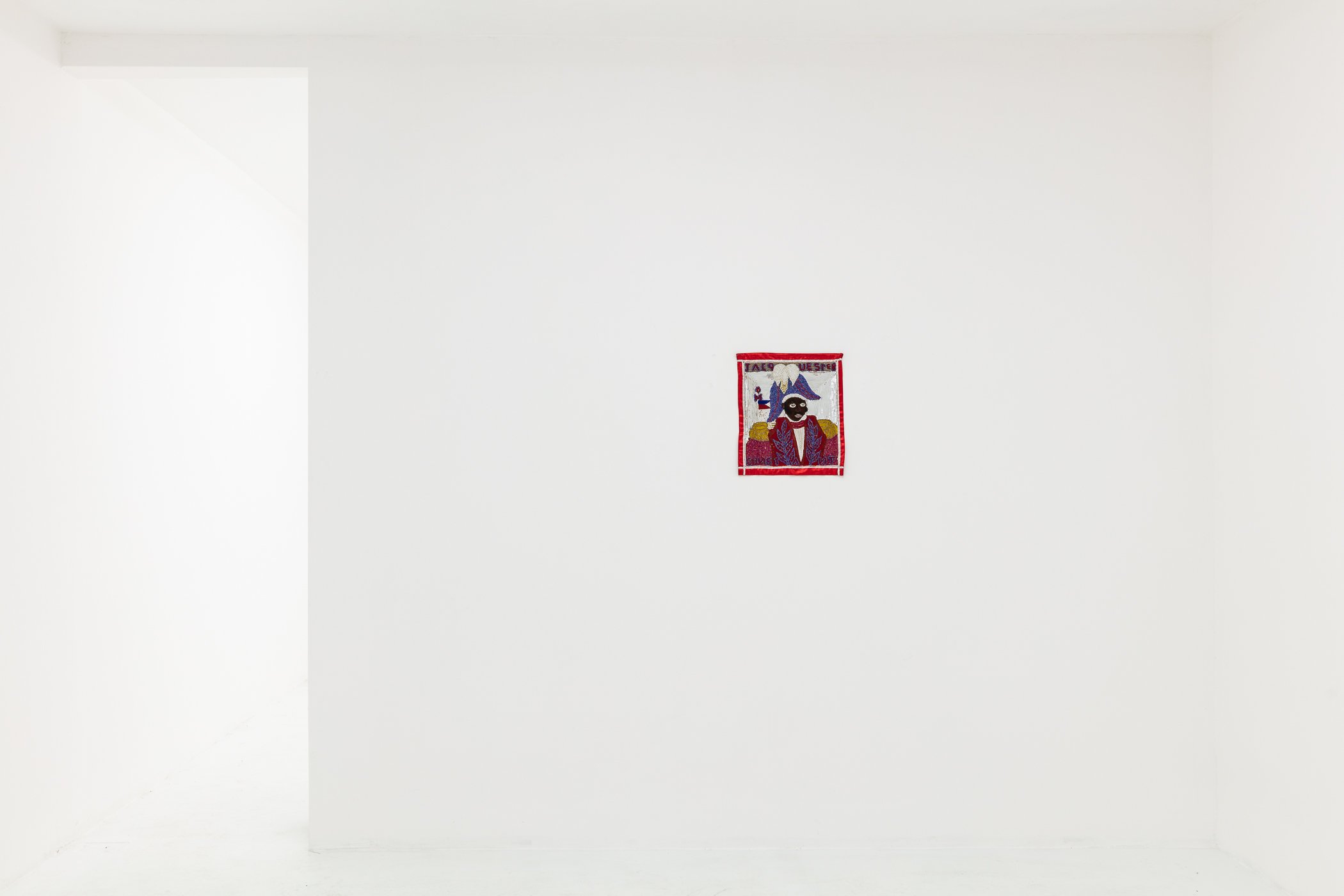
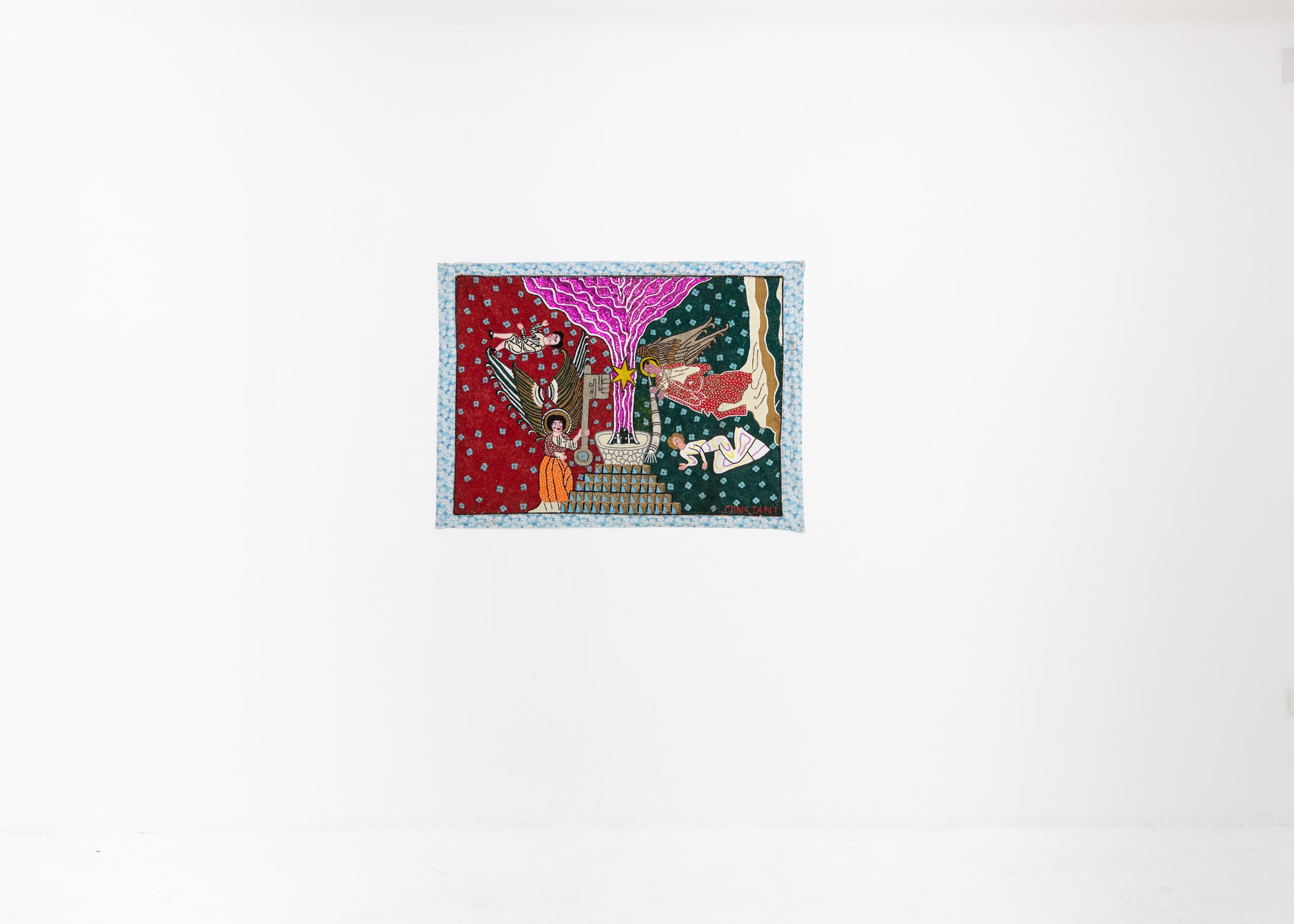
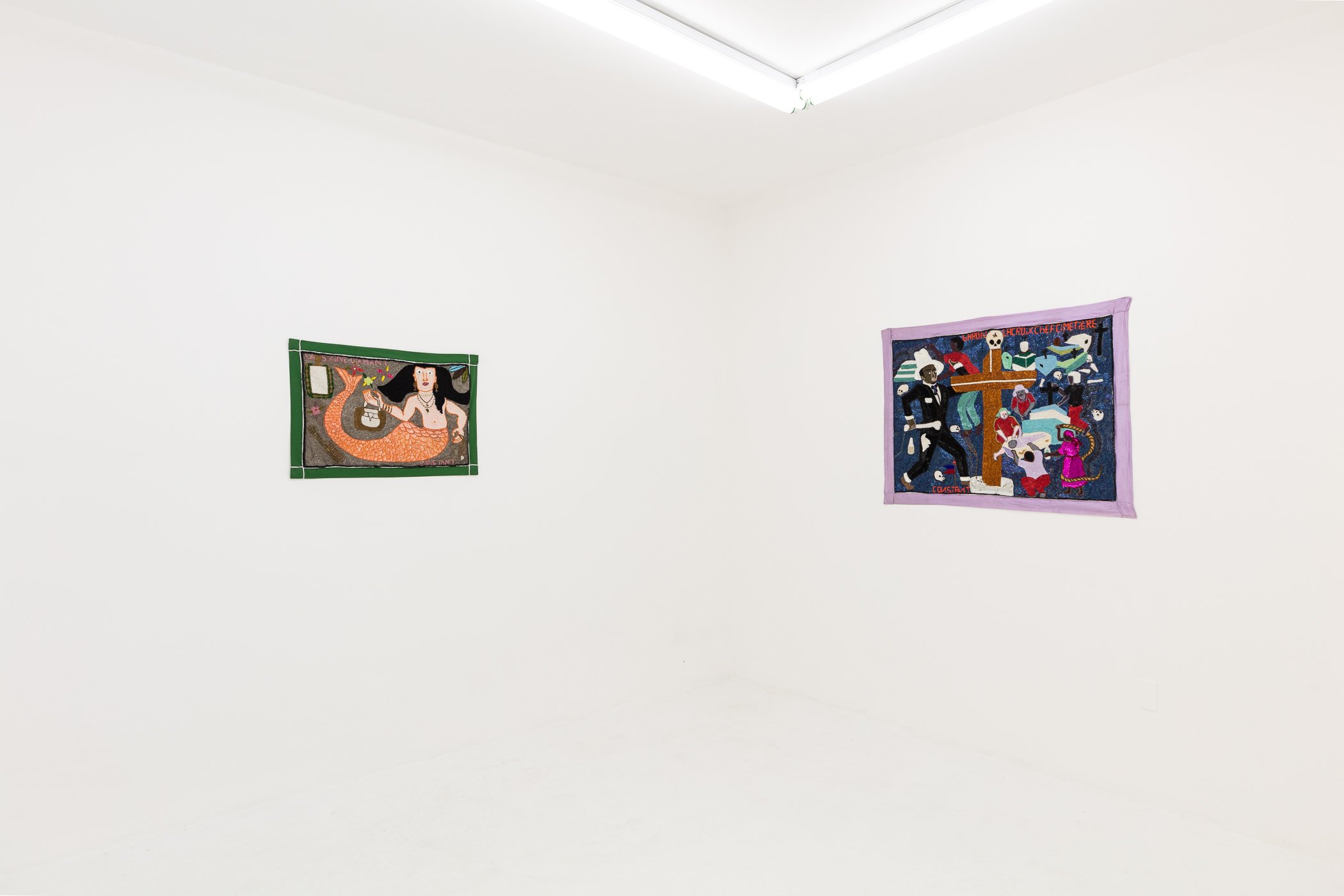
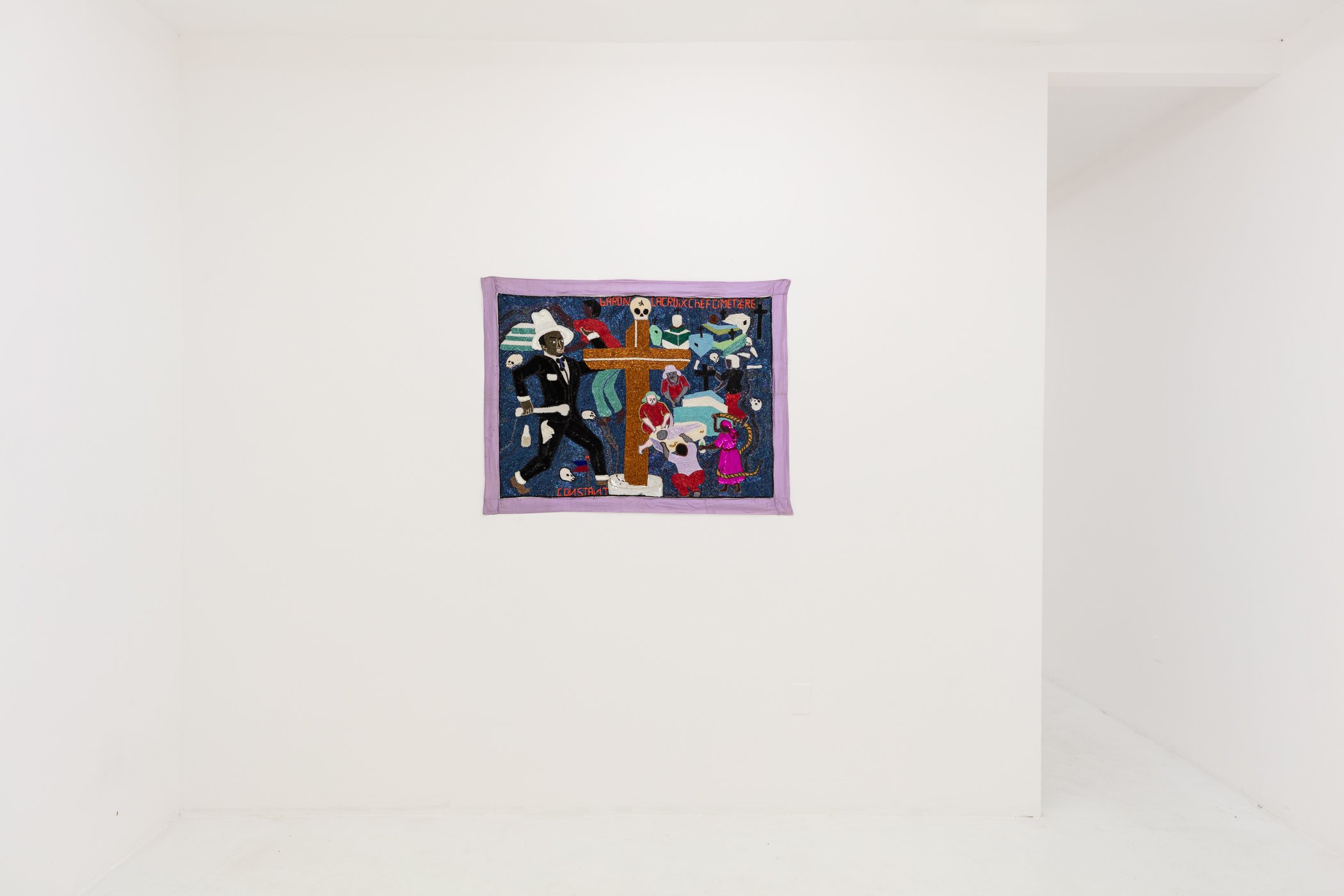
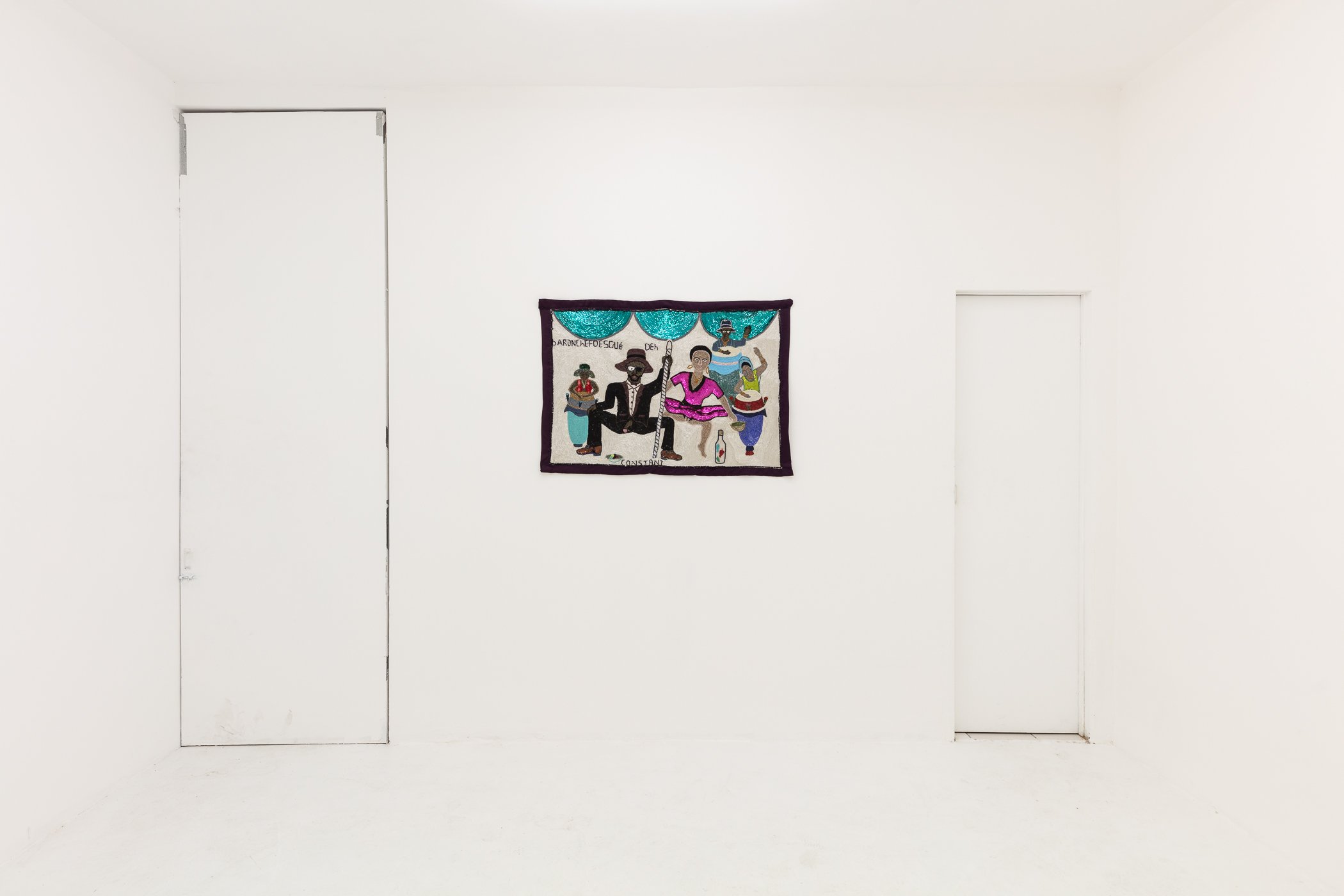
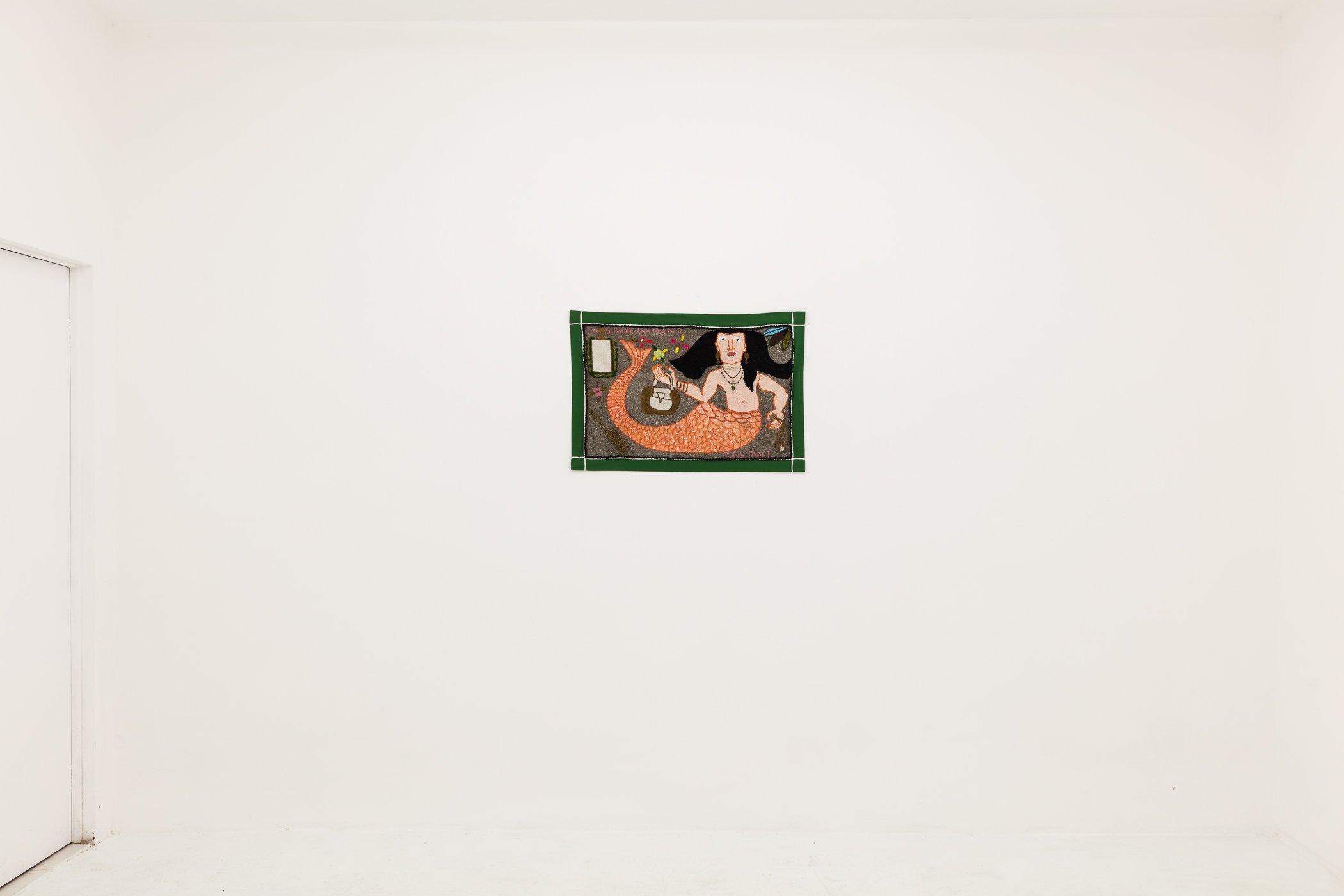
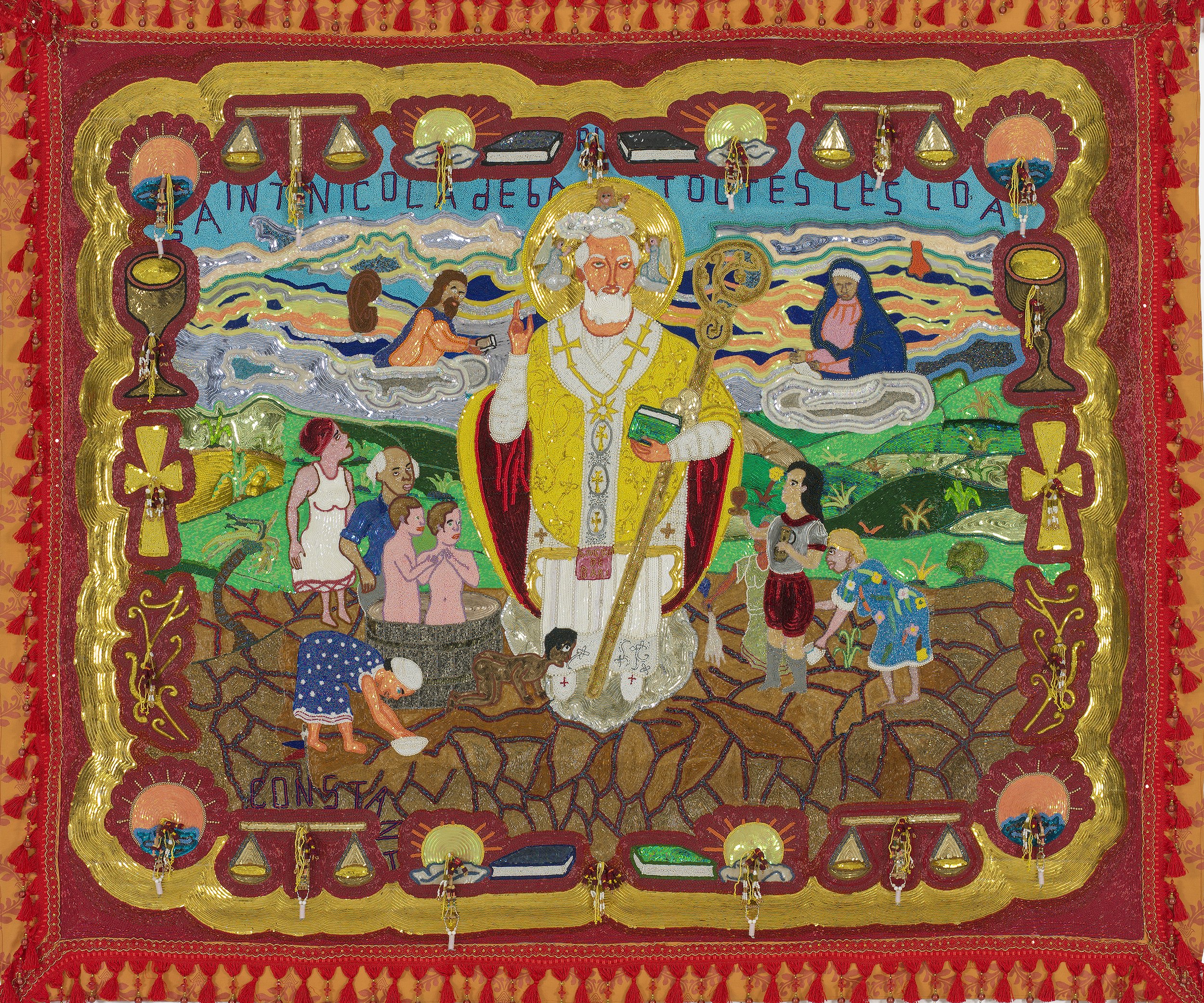
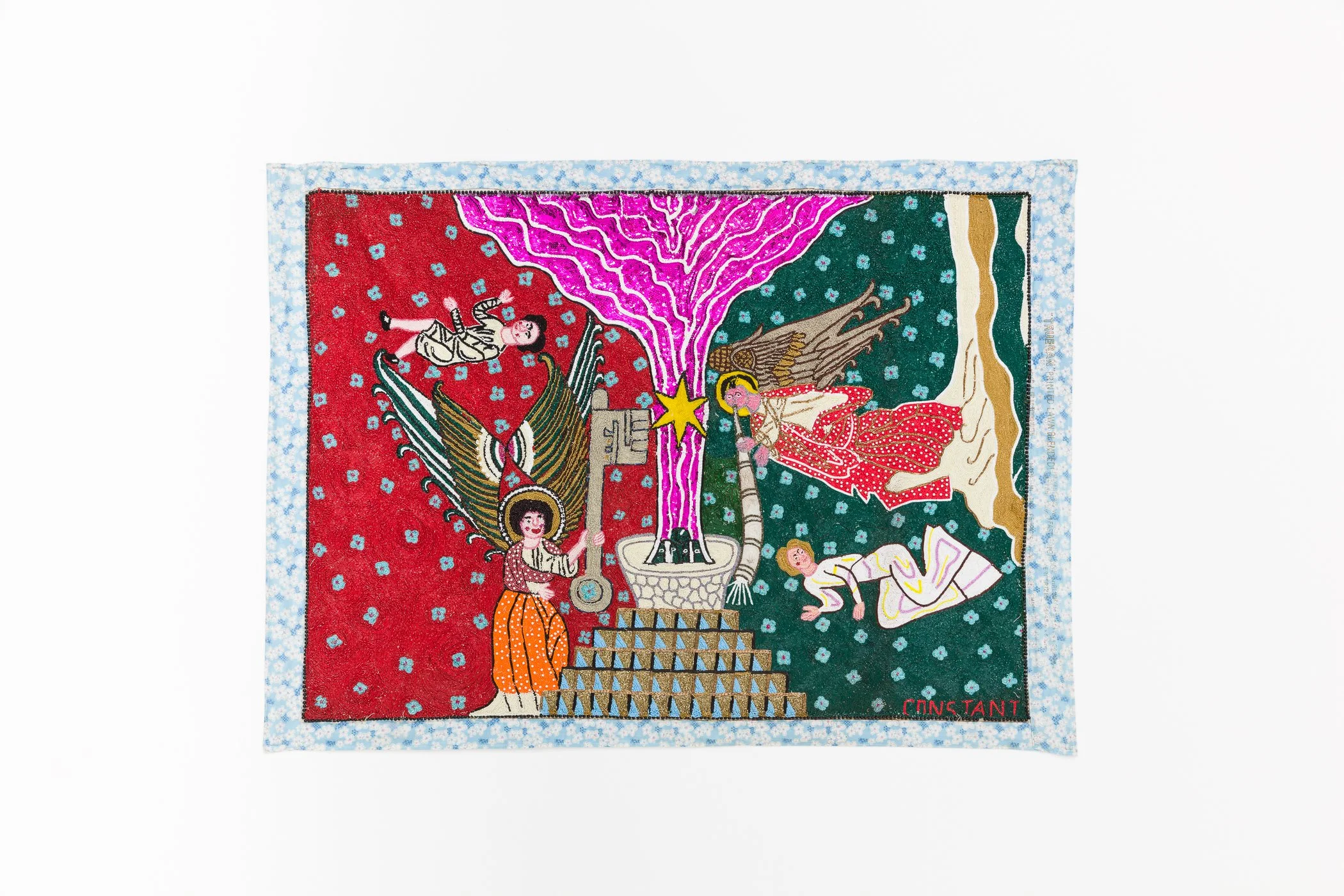
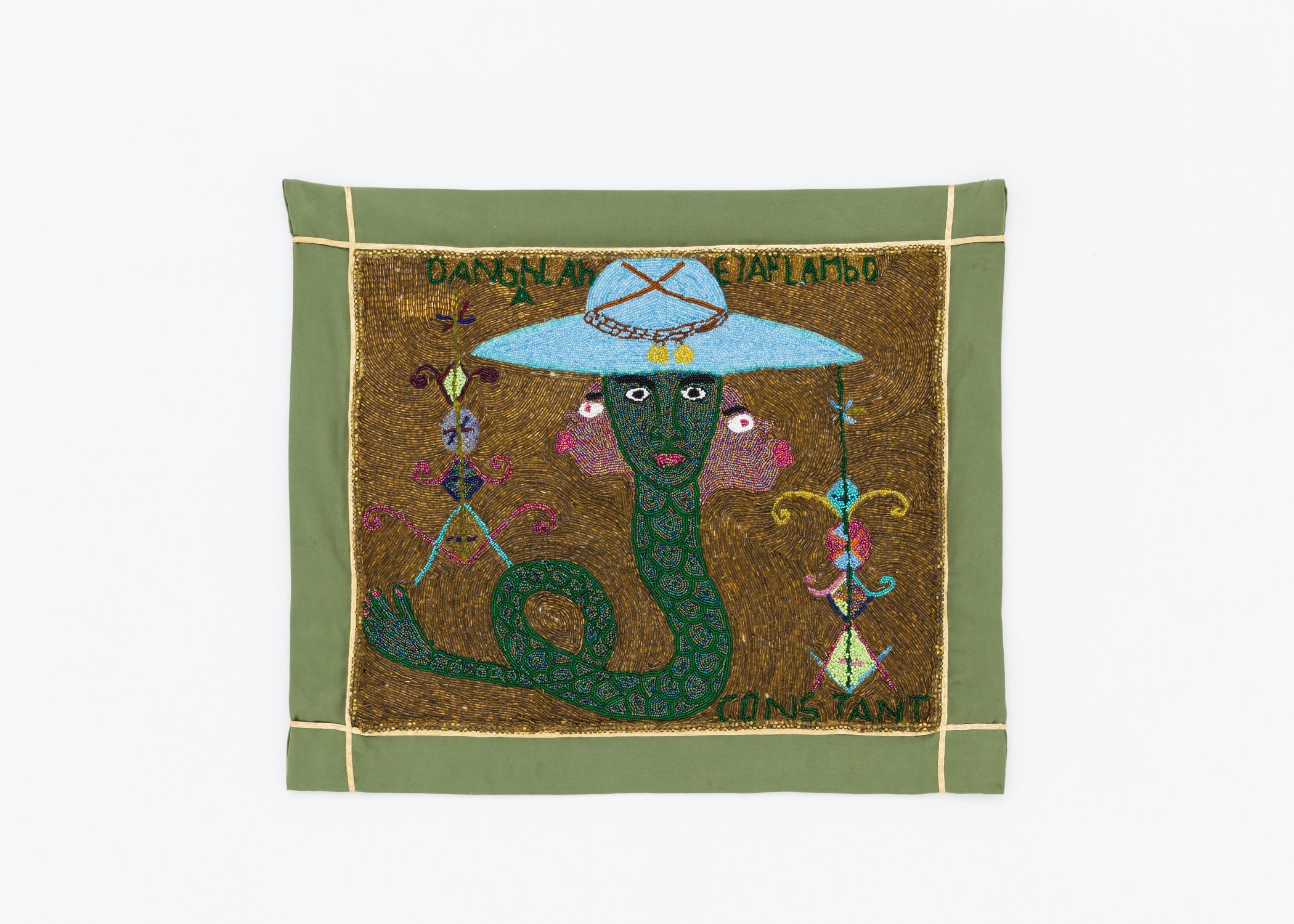
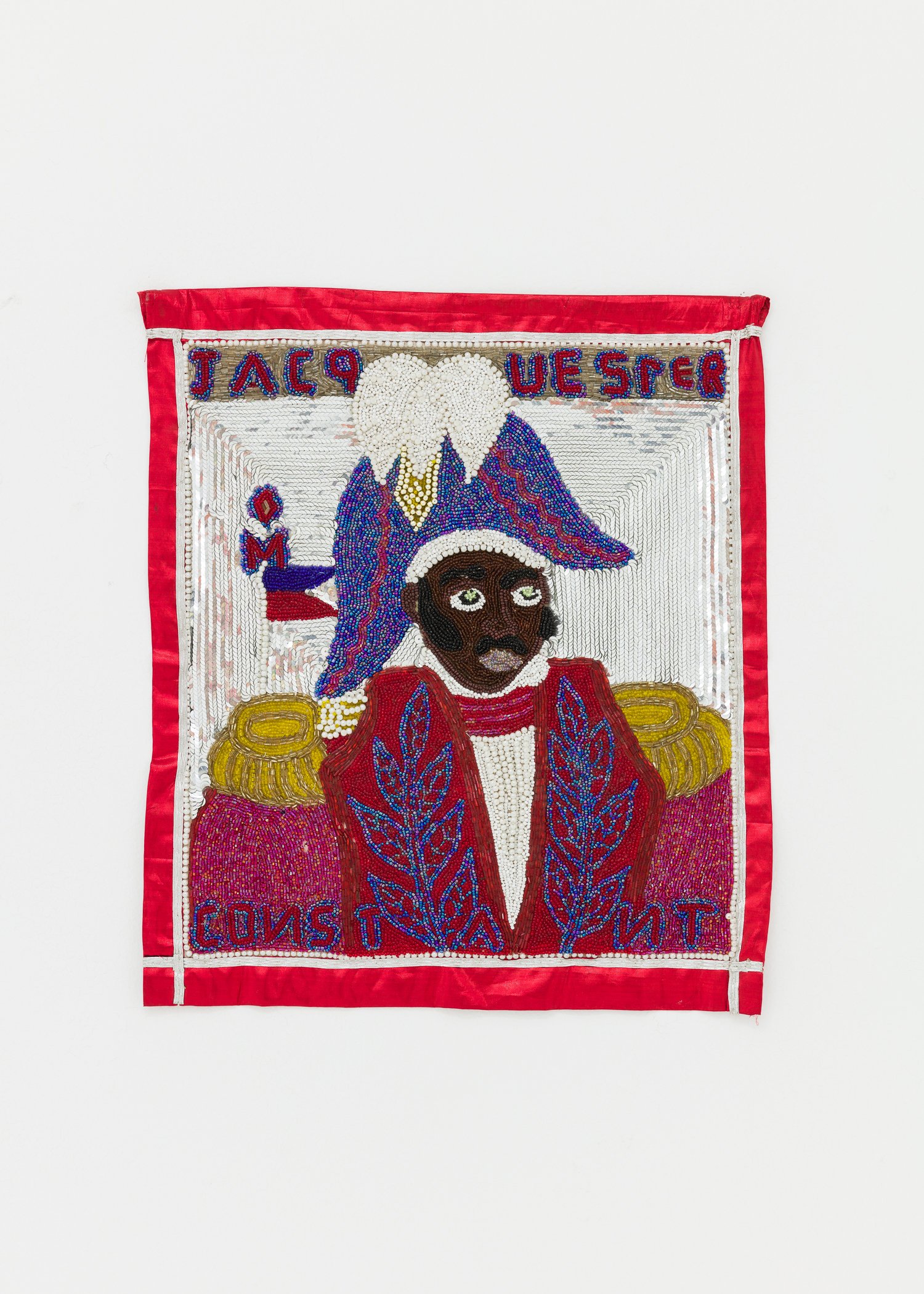
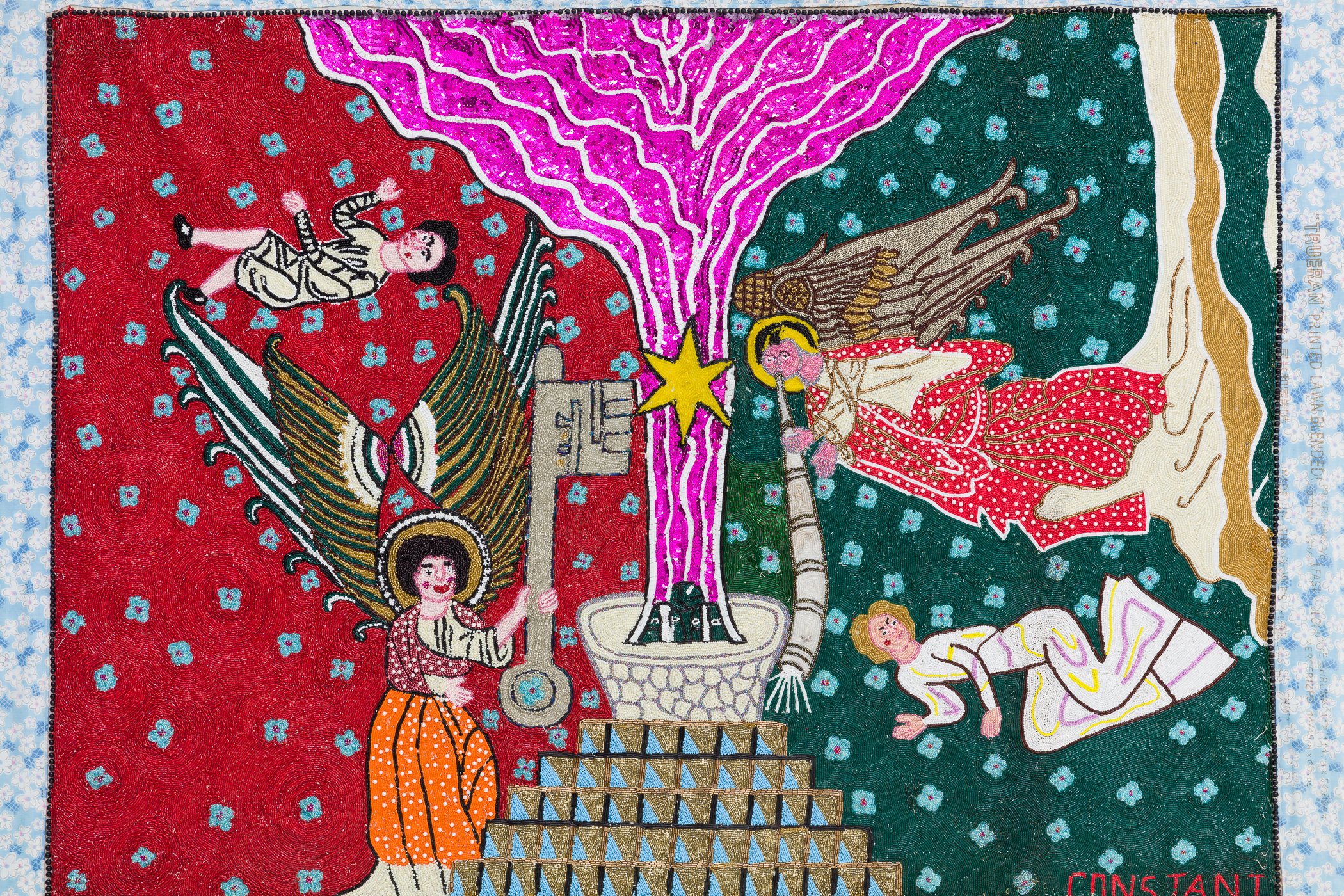
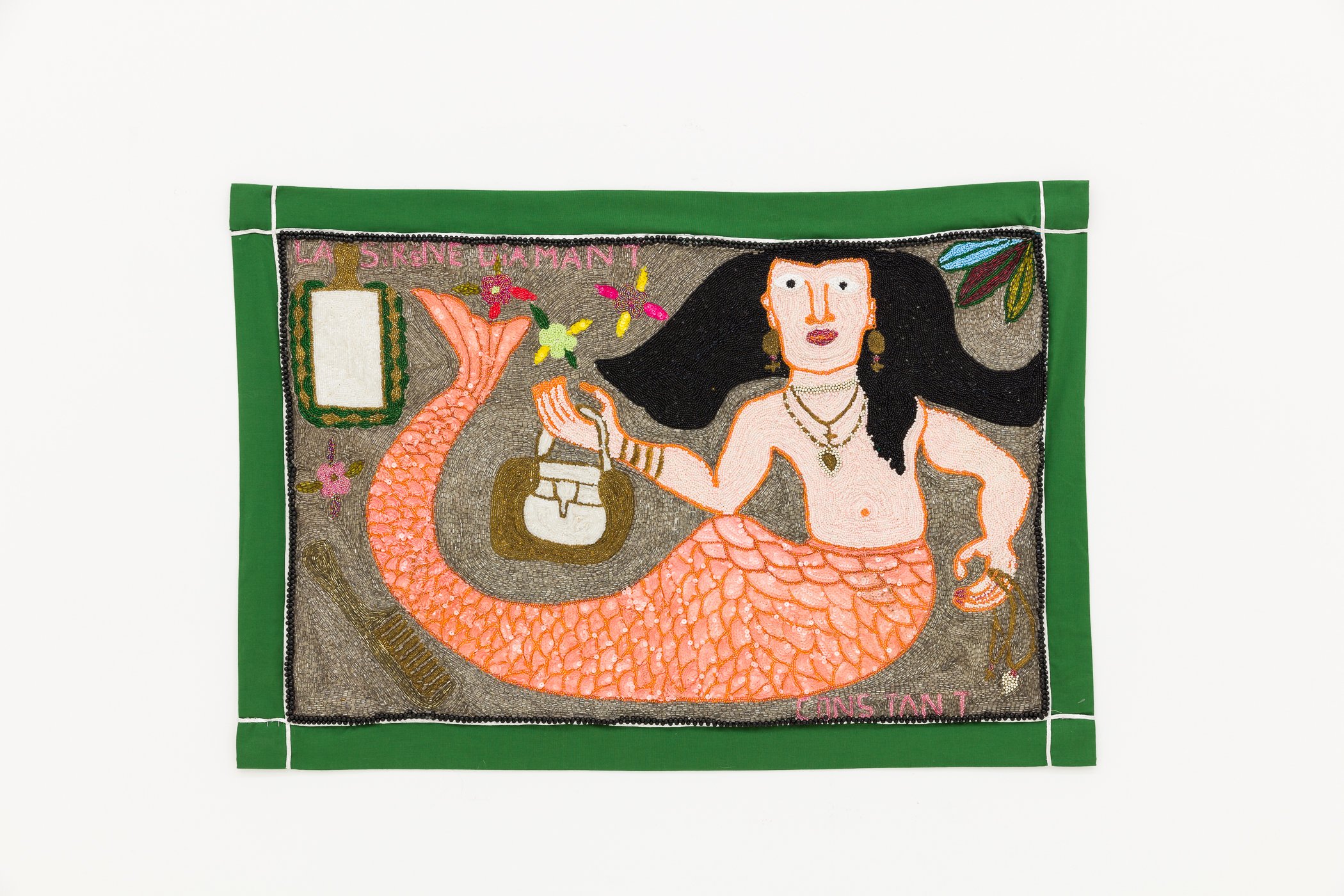
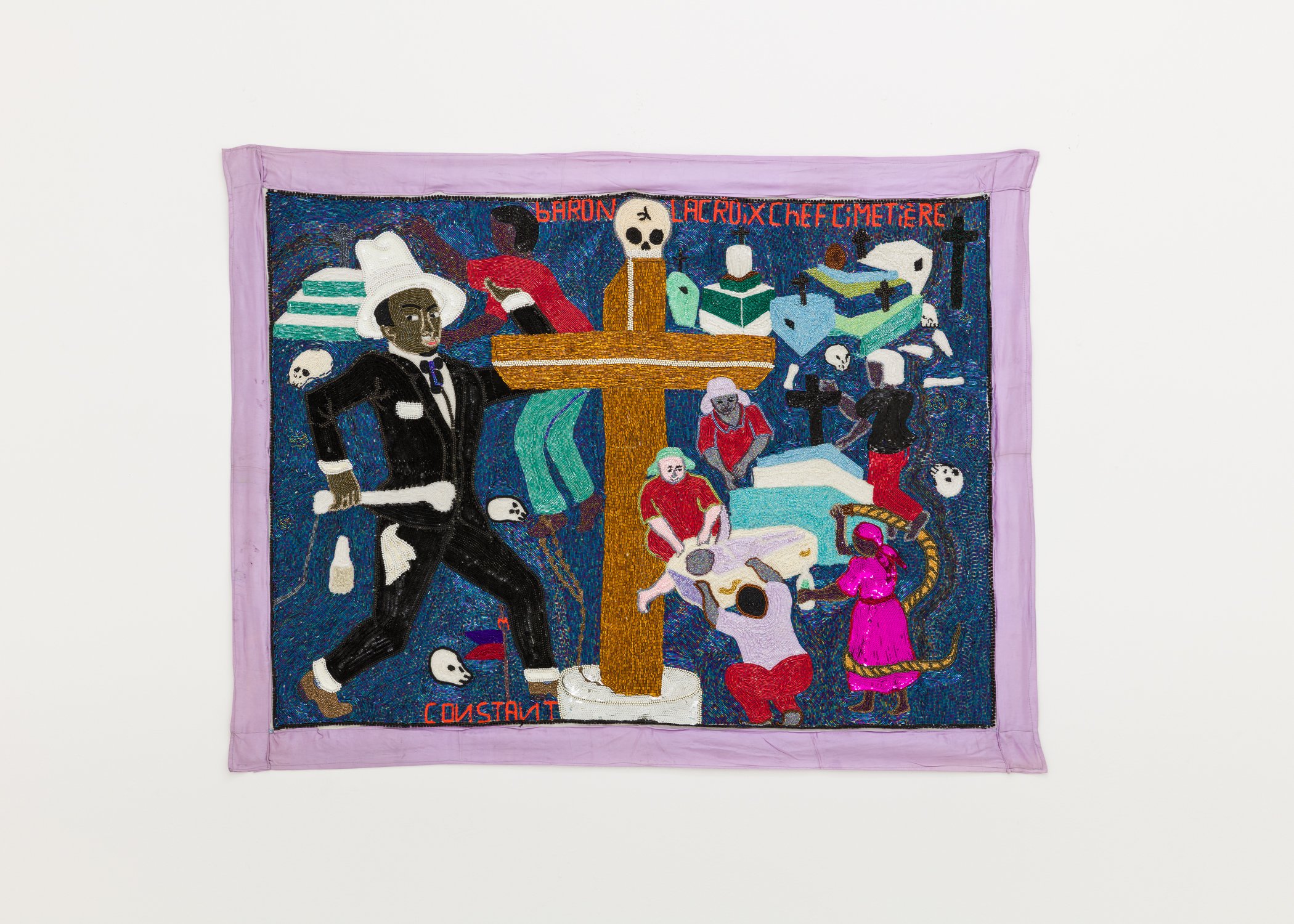
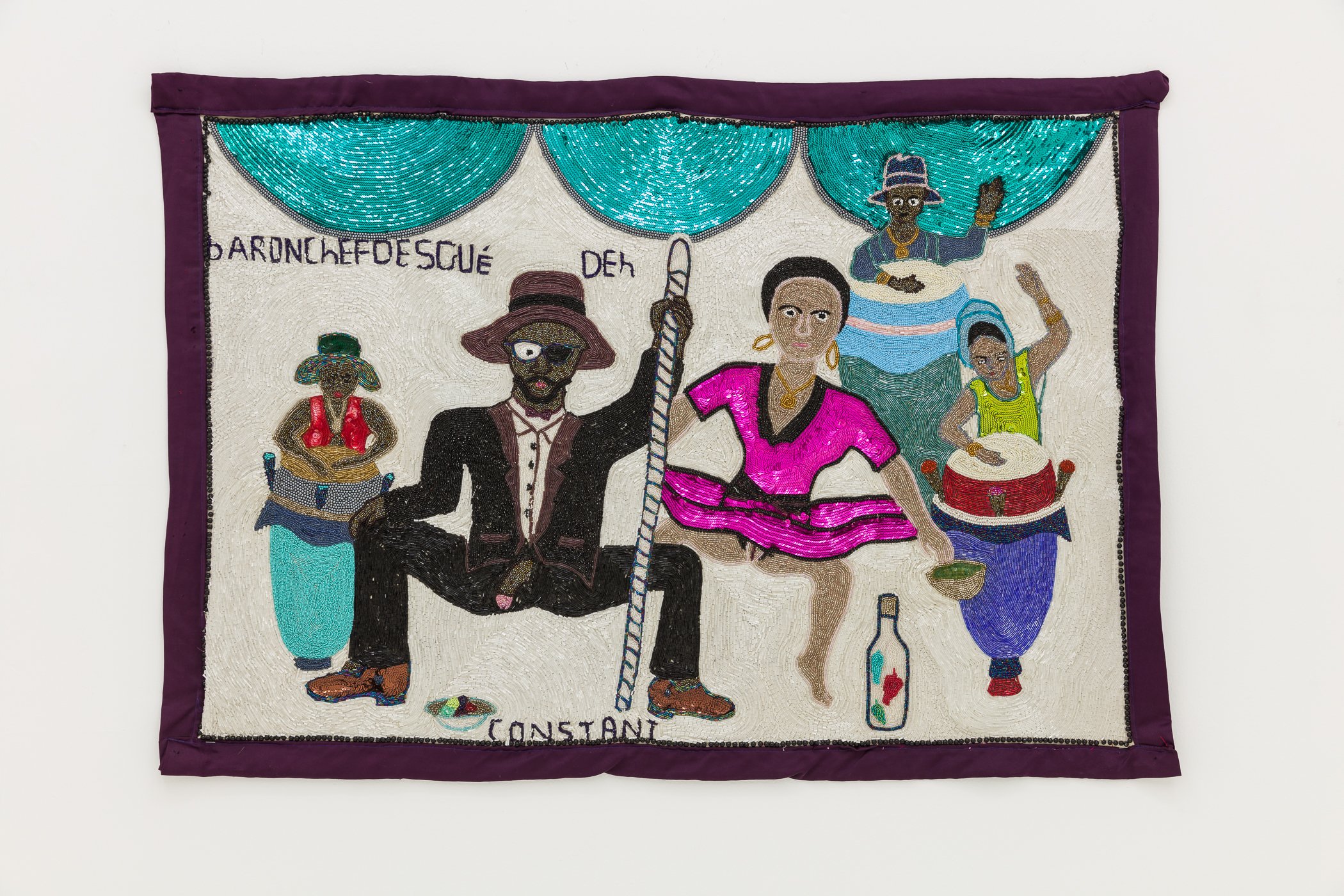
Your Custom Text Here
APRIL 16TH-MAY 22nd
Spirits are threaded through Myrlande Constant’s work just as tautly as her beads. This tautness serves to create something of an optical illusion. Up close we can trace their paths with our fingers, but from afar, they blur into texture. Her work is intricately tangled, and purposefully so, the spirits are like the beads, we aren’t supposed to be able to pull them from the work with our hands. If we could separate the spirits from the works, the works would lose their essence. Her flags are created in the tradition of vodou-drapo, they are meant to draw in spirits.
Myrlande Constant’s flags aren’t traditional, they push as much as they pull. Traditional weaving techniques are employed as often as techniques borrowed from Haute Couture. Historical figures are just as present as pop culture references. Spirits are just as likely to be adorned with ancient ceremonial objects, as they are to be holding handbags
But what most crucially differentiates Myrlande’s flags from traditional vodou flags are the reasons under which they are created. They haven’t been created in the name of ceremony, they’ve been created in the name of art. This transference of purpose creates a tension in the modern gallery space: A tension between the world of the secular and the world of the spiritual.
If we follow this tension to its logical end, we are posed with many questions: What does it mean when ceremonial art is removed from the ceremony? What happens to the spirits drawn to the work? Where do they go? (These questions aren’t as elusive as they might sound, one can find their answers when seeing the works in person.)
Today our entire lives are mediated through digital simulacra, and, to demand one’s physical presence is a radical (and necessary) act. It can be easy to forget that - much like Myrlande’s work - the gallery space is a descendant of the spiritual practices of our ancestors. Thomas McEvilley writes that the earliest historical analogue of the gallery is the Egyptian tomb, a space sealed off from the outside world that puts its visitors in contact with eternity. This is what is so exciting about Myrlande Constant’s work, her flags re-center the eternal in a space that has been desperately in need of it. She turns the gallery back into the temple - and she does so without anachronism: Sexual scenes meet political actions, agriculture, syncretism, and racial tensions.
Through her work Myrlande Constant does the impossible - she creates spiritual spaces that are comprehensible in the modern world. She works with the tools gifted to her by time (her liberated femininity, her sewing techniques, her historical perspective) and uses them to subvert the form, and through this subversion she creates flags that can sit inside our time while rubbing against its edges. In their presence we are humbled by the beauty of their texture, by the weight of their history, by the depth of their calling. When we are looking at them it becomes obvious that we are not staring by ourselves, we are staring alongside the spirits in the room with us.
Myrlande Constant has exhibited her work at the El-Saieh Gallery, Port-au-Prince; Pioneer Works, New York; CENTRAL FINE Miami Beach; the Perez Art Museum Miami; the Fowler Museum, California; Le Grand Palais, France; Luhring Augustine, New York; The Museum of Contemporary Art, North Miami; among other places.
Her work will be included in La Biennale di Venezia “The Milk of Dreams” curated by Cecilia Alemani, in April 2022.
1. Voudo-drapo are ceremonial flags used in haitain spiritual rituals as a way to draw in spirits. Interestingly, this intended function dictates their form, the use of beads and sequins are no accident, their shiny luster is purposefully employed as a means to attract spirits.
Text by Hunter Osking
APRIL 16TH-MAY 22nd
Spirits are threaded through Myrlande Constant’s work just as tautly as her beads. This tautness serves to create something of an optical illusion. Up close we can trace their paths with our fingers, but from afar, they blur into texture. Her work is intricately tangled, and purposefully so, the spirits are like the beads, we aren’t supposed to be able to pull them from the work with our hands. If we could separate the spirits from the works, the works would lose their essence. Her flags are created in the tradition of vodou-drapo, they are meant to draw in spirits.
Myrlande Constant’s flags aren’t traditional, they push as much as they pull. Traditional weaving techniques are employed as often as techniques borrowed from Haute Couture. Historical figures are just as present as pop culture references. Spirits are just as likely to be adorned with ancient ceremonial objects, as they are to be holding handbags
But what most crucially differentiates Myrlande’s flags from traditional vodou flags are the reasons under which they are created. They haven’t been created in the name of ceremony, they’ve been created in the name of art. This transference of purpose creates a tension in the modern gallery space: A tension between the world of the secular and the world of the spiritual.
If we follow this tension to its logical end, we are posed with many questions: What does it mean when ceremonial art is removed from the ceremony? What happens to the spirits drawn to the work? Where do they go? (These questions aren’t as elusive as they might sound, one can find their answers when seeing the works in person.)
Today our entire lives are mediated through digital simulacra, and, to demand one’s physical presence is a radical (and necessary) act. It can be easy to forget that - much like Myrlande’s work - the gallery space is a descendant of the spiritual practices of our ancestors. Thomas McEvilley writes that the earliest historical analogue of the gallery is the Egyptian tomb, a space sealed off from the outside world that puts its visitors in contact with eternity. This is what is so exciting about Myrlande Constant’s work, her flags re-center the eternal in a space that has been desperately in need of it. She turns the gallery back into the temple - and she does so without anachronism: Sexual scenes meet political actions, agriculture, syncretism, and racial tensions.
Through her work Myrlande Constant does the impossible - she creates spiritual spaces that are comprehensible in the modern world. She works with the tools gifted to her by time (her liberated femininity, her sewing techniques, her historical perspective) and uses them to subvert the form, and through this subversion she creates flags that can sit inside our time while rubbing against its edges. In their presence we are humbled by the beauty of their texture, by the weight of their history, by the depth of their calling. When we are looking at them it becomes obvious that we are not staring by ourselves, we are staring alongside the spirits in the room with us.
Myrlande Constant has exhibited her work at the El-Saieh Gallery, Port-au-Prince; Pioneer Works, New York; CENTRAL FINE Miami Beach; the Perez Art Museum Miami; the Fowler Museum, California; Le Grand Palais, France; Luhring Augustine, New York; The Museum of Contemporary Art, North Miami; among other places.
Her work will be included in La Biennale di Venezia “The Milk of Dreams” curated by Cecilia Alemani, in April 2022.
1. Voudo-drapo are ceremonial flags used in haitain spiritual rituals as a way to draw in spirits. Interestingly, this intended function dictates their form, the use of beads and sequins are no accident, their shiny luster is purposefully employed as a means to attract spirits.
Text by Hunter Osking